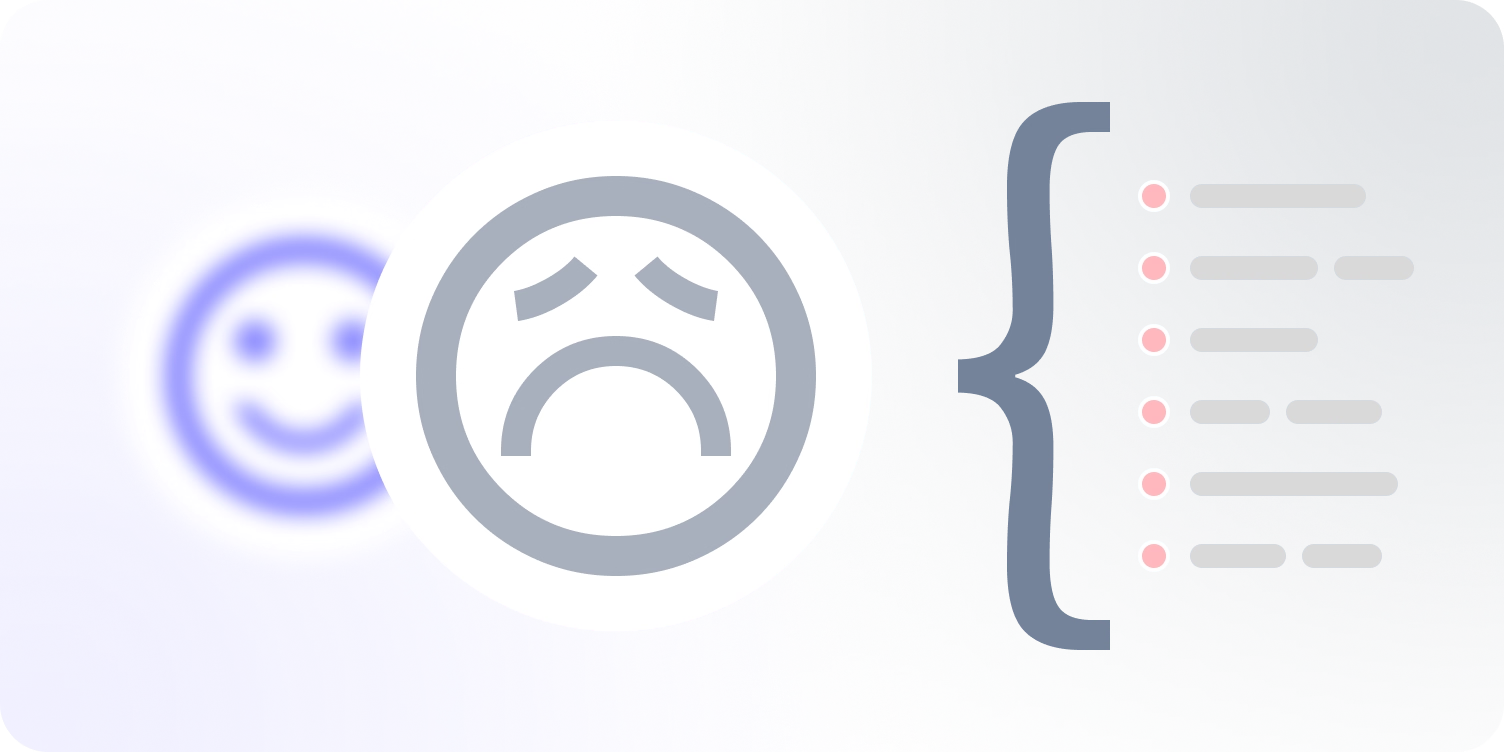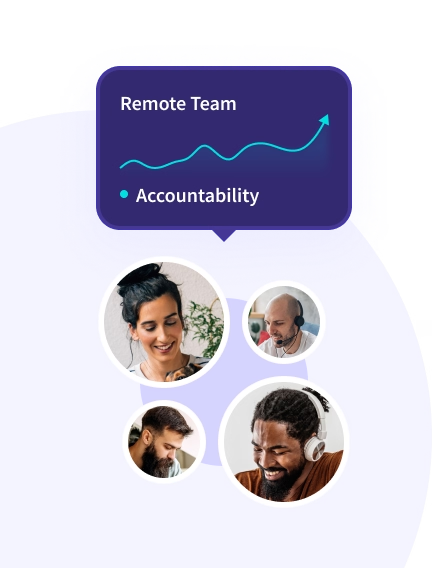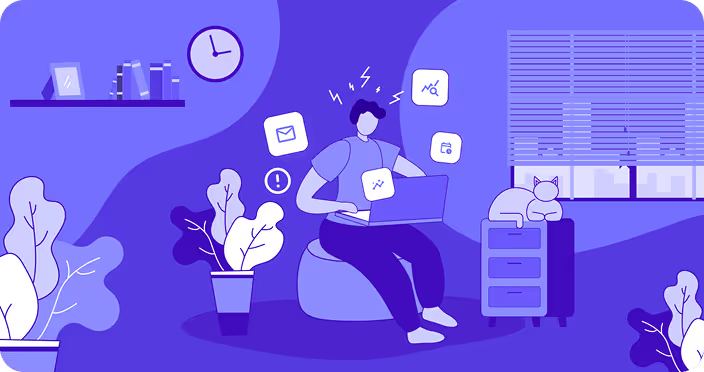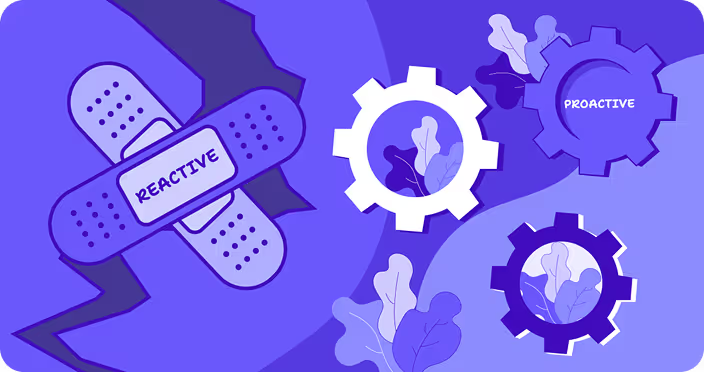How to Identify, Prevent, and Treat Employee Burnout


What is Employee Burnout?
Most of us are familiar with the term “burnout,” used often to express a feeling of hopelessness resulting from repetitive activity. While used casually to refer to any activity we have grown tired of or that produces diminishing returns, burnout can actually yield severe health consequences.
Workers’ burnout is a syndrome that stems from an afflicted individual’s experience at work. Caused primarily by prolonged stress and constant demand, burnout is the escalating process of approaching one’s mental or physical breaking point. The feelings of hopelessness accompany a host of other symptoms that impact the individual and those surrounding them, including family, friends, colleagues, their workplace, and society.
According to the 11th revision of the International Classification of Diseases (ICD-11) by the World Health Organization, the employee burnout definition reads:
A syndrome resulting from chronic, unmanaged workplace stress characterized by three dimensions:
- feelings of fatigue
- disconnectedness from, or cynicism towards one’s occupation
- reduced professional efficacy
Occupational burnout comes from excessive time and energy spent on work and the resulting stress. Though strongly resembling and often leading to other medical ailments, burnout in the workplace is not technically classified as a medical condition but as an occupational phenomenon. Nevertheless, the accompanying physical, mental, and emotional symptoms of burnout can have devastating and lasting effects on one’s well-being.

{{divider}}
The Impact of COVID-19 on Burnout in the Workplace
Employees worldwide were suddenly required to work remotely during the pandemic - a trend that continues in the form of now popular hybrid-work models. Alongside concerns about the effect of remote work on employee productivity, the toll on employee well-being has also become a significant concern. As the pandemic lingers, employee burnout has reached historic levels.
According to a Gallup study, burnout appears to be on the rise in the American workforce. Life evaluations of Americans have hit their lowest levels since the 2008 recession, with less than half of individuals reporting their lives as “thriving” as of April 2020 – a 15% drop from pre-pandemic levels.
Employers can no longer afford to ignore the impact of the workplace on mental health and vice versa. According to Deloitte’s employee burnout statistics, more than 70% of employees reported being burnt out and felt their employers weren’t doing enough to address burnout in the workplace. Though remote working has since been scaled back to more sustainable and flexible hybrid-work models, remote employees are still at high risk of burnout and the threat of the great resignation lingers.
While the impact of COVID-19 has created a rich breeding ground for workers' burnout, we must view increasing levels of burnout not just as a “symptom” of COVID but as a separate pandemic all in itself.
{{banner-1}}
Causes of Workplace Burnout
Workers’ burnout does not happen overnight. Burnout is a slow burn whose initial symptoms develop quietly and under the surface. Burnout can go undetected for weeks, months, or even years, wreaking havoc in the life of the affected until it’s recognized and appropriate steps are taken to halt and reverse the process.
A variety of factors can burn out employees; the more factors of burnout that affect a given individual at one time, the greater their risk of burnout.

What Causes Employee Burnout?
- Cultural Influences
- Lack of Labor Regulation
- Unbalanced Workloads
- Poor Work-Life Balance
- Lack of Employee Engagement / Over Engagement
- Traumatic Current Events
- Economic Insecurity
- Toxic Work Environments
- Lack of Support
- Poor Leadership
Some of these causes of employee burnout are easily within the employer’s range of control, like work-life balance, poor leadership, and employee engagement. Other causes like economic insecurity, traumatic current events, and labor regulation lie outside the employer’s control.
However, employers can utilize programs and tools like employee engagement software within their organization to support burnout management and help mitigate risk caused by uncontrollable factors that can burn out employees.
{{divider}}
Who’s at Risk of Workplace Burnout?
Many of the causes of burnout are connected, and the more causes an employee faces, the greater their risk of burnout. Though any employee in any position or any industry can experience burnout in the workplace, some are at a substantially higher risk than others.
What Factors of Burnout Increase an Individual’s Risk?
- Positions closely tied to the company’s mission, such as CEOs, leadership positions, and the self-employed
- Employees from countries with less labor regulation and cultures that lead to burnout culture in the workplace, like Japan, The United States, South Korea, China, and Turkey
- High-stakes industries with enormous consequences for mistakes, such as the legal field or healthcare industry
- High-stress positions where personal safety and the safety of others are a concern, such as firefighters, police, military personnel, doctors, nurses, etc.
- Purpose-driven industries such as healthcare, non-profits, and small businesses
- Individuals who have PTSD as a result of a traumatic life experience
- Employees with little to no workplace autonomy
- Public sector employees
- Career shift workers
{{divider}}
Symptoms of Workplace Burnout
Each element of burnout feeds into and reinforces the others. It is difficult to be engaged when we are exhausted, and exhaustion undermines effectiveness, hurting morale. Poor morale damages relationships and the ability to cooperate and collaborate. The symptoms associated with burnout can quickly lead to a domino effect and compound. Burnout in the workplace will then spread to other areas of an affected employee’s life, resulting in disengagement not only from work but also from friends and family.

What Are the Symptoms of Employee Burnout?
- Feelings of Frustration and Irritability
- Feelings of Uselessness, Emptiness, and Pessimism
- Physical, Mental, and Emotional Exhaustion
- Loss of Motivation and Enthusiasm
- Thoughts of Resignation
- Poor Relationships with Colleagues, Friends, and Family Members
- Poor Sleep Habits and Increased Absenteeism
- Sensitivity to Feedback and Low Self-Esteem
- Increased Mistakes and Indecisiveness
- Anxiety and Depression
As you can see, aside from exhaustion, many of the initial employee burnout symptoms are mental or emotional symptoms. In fact, many of the same symptoms of depression are also signs of employee burnout. However, chronic burnout symptoms can develop over time and lead to other major health problems, which is why it’s vital to identify burnout warning signs early on.
Chronic Burnout Symptoms Can Lead To:
- Alcohol or Substance Misuse
- Heart Disease
- High Blood Pressure
- Type 2 Diabetes
- Weakened Immune System
- Clinical Anxiety / Depression
{{divider}}
Effects of Employee Burnout
For the individuals affected, the effects of employee burnout reverberate throughout their relationships, their workplace, and their community. Burnout never affects just one person. When a single employee is experiencing burnout, the symptoms will change how they interact with their family, friends, and colleagues. Some of the symptoms can be “contagious,” with disaffection spreading amongst an afflicted employee’s family, close friends, and colleagues.
Worse yet, burnout can affect a family for generations to come, leading to mental health issues that can manifest differently from generation to generation. Promptly dealing with employee burnout within a family can help prevent these cascading effects.
For employers, workplace burnout can wreak havoc on a workforce and business, which is why employers need to be 100% committed to burnout management and prevention. Burnout in the workplace can cost employers time and money, and damage the employer’s brand, reputation, and culture.
Employee burnout is bad for your bottom line too. Mental health has substantial economic consequences at the employer and national levels. Research shows that companies without systems to support employee wellbeing have poor employee retention rates, lower productivity, and higher healthcare costs. Workplace stress is estimated to cost the US economy more than $500 billion each year; the cost of employee burnout is staggering.
{{banner-2}}
Identifying Workplace Burnout
How can employers identify a potentially chronic problem with burnout in the workplace? Of course, some signs of burnout can be normal when isolated and temporary. But certain trends by an individual employee or even your entire workforce can point to a potentially major problem.

What Workplace Trends Are Signs of Employee Burnout?
- Increased Absenteeism
- Increased Mistakes
- Increased Healthcare Costs
- Indecisiveness
- Increased Turnover
- Disengagement
- Deteriorating Relationships
- Poor Communication
{{divider}}
How to Prevent Burnout in the Workplace
Who is to blame for staff burnout? The answer is simple – everyone. Preventing employee burnout is a collective responsibility that requires attentiveness on behalf of the employer, individual, and society. We all have to do our part. If we don’t actively insist on protecting employee mental health and attempt to maintain a healthier work environment, we are part of the problem.
In locations where the local culture and government regulation provide a rich breeding ground for burnout in the workplace, companies take on the brunt of the responsibility for ensuring their workforces have a healthy environment to work.
Employee burnout prevention is essential; a healthy workforce requires a long-term commitment. Employers can’t just throw perks, titles, or money at the problem.
The first step is to remove mental health stigma in the workplace and bring the issue of workers’ burnout into the light where it can be properly addressed. Experts find that 60% of those with a mental illness do not seek treatment, and 20% of those do not take advantage of mental health services at work out of fear it will hurt their careers.
The fact is, the old method of compartmentalizing our professional and personal lives has rapidly deteriorated since the pandemic. We cannot expect employees and co-workers to thrive professionally when they are struggling personally. Proper burnout management requires a holistic approach to well-being that demands that we be attentive to the needs of the whole person.
How Can Employers Help Prevent Burnout in the Workplace?
- Provide ample vacation time. Offer paid mental health days, mandatory vacation days, and ample maternity and paternity leave.
- Consider the disparate impact of burnout on certain employees, such as working mothers and single parents, and how to better accommodate their needs.
- Utilize leadership by investing in education on how to prevent burnout and burnout management which can be implemented to avert team burnout. Management burnout should also be a focus for employers.
- Prioritize engagement and wellbeing. With proper engagement, communication channels, and opportunities for employees to give actionable feedback - burnout in the workplace can be identified and mitigated before it negatively impacts the employee, their job, or the company.
- Provide flexibility for your workforce and capitalize on the benefits of well-managed remote and hybrid work.
- Prioritize work-life balance. Managers’ decision-making needs to be in tune with employees' well-being while fostering work schedules that support productivity and work-life integration.
- Foster a vibrant company culture to help prevent the development of a burnout culture and keep employees engaged around a unified purpose to motivate and drive the workforce. A sense of “belonging” in the company can make a big difference.
- Reduce unnecessary meetings and ensure all managers have a proper span of control to manage their teams’ workloads effectively. Manager burnout is common and should also be addressed.
- Offer physical and mental health benefits in the form of insurance, perks, coaching, therapy, and other human resources programs and initiatives.
- Create a high-performance KPI culture over a micromanaged “hustle” culture.
- Create or collaborate with volunteer or charitable programs that boost employees’ sense of purpose.
- Advocate for healthier work environments and habits as part of your brand. Set an example for competitors.
- Use productivity monitoring and other tools to help stop burnout before it starts.

Tools for Preventing Employee Burnout
There are tools available that can help employers prevent, identify, and mitigate burnout. Software that helps support employee well-being can be a big help in ensuring your workforce stays healthy. Communication tools and surveying apps can help boost engagement and encourage 2-way feedback so employers can identify employee discontent and possible burnout signs early.
Software to monitor employees’ productivity, performance, and time and attendance are great tools for keeping tabs on the health and vitality of your workforce. Employee monitoring software like Insightful identifies individual and workforce trends that can lead to burnout and offers actionable insights that can help you prevent burnout before it starts.
Employee Monitoring Software Offers:
- Visibility into employee workloads and workflow allows managers to make adjustments to ensure a proper span of control and stable work-life balance.
- Insights into employee productivity and how employees use their time can highlight whether employees are properly engaged.
- Time and attendance data shows if employees are working too long hours.
- Collective features support a robust company culture by enabling remote and hybrid work and providing more autonomy, independence, flexibility, and trust to your workforce.
{{divider}}
Recovering from Workplace Burnout
During and after an employee experiences burnout, they will require support from those around them to recover. If the employee is aware of the problem, they may approach their employer themselves to find a solution; however, many may not due to the lingering stigma surrounding mental health in the workplace. After all, surveys suggest that 40% of workers think burnout is an inevitable part of success. It’s for this reason that it’s so important that employers learn to identify and learn how to prevent employee burnout.
The first step is to address how the employee is using their time and energy and to craft a solution that will provide them with the proper work-life balance to recover. This may mean taking vacation time, switching to a more flexible work schedule, or offering flexible work environments. Burnt-out employees can benefit significantly from taking some time off before returning to work.
Offer internal or external mental health perks and well-being services to employees experiencing burnout in the workplace. When it comes to burnout management, something as simple as coaching sessions to help the employee better manage their time and energy could be highly beneficial. This will equip employees with the know-how to prevent burnout at work by being more attentive to their own habits.
Of course, managing burnout in the workplace effectively requires employers to learn to identify the symptoms and patterns of burnout. Recognizing burnout in employees and taking preventative measures before it escalates is key. Recovery from burnout begins with offering solutions that should have ideally already been woven into the working environment.
One employee suffering from burnout can quickly lead to corporate burnout on a larger scale in your workforce. It’s essential to mitigate the problem not just at the individual level but for the whole organization. Consider launching a burnout awareness campaign as part of your organizational strategy to educate your workforce on how to avoid burnout at work and nip burnout in the bud.
{{banner-3}}
Build Long-Term Success Through
Healthy, Engaged Teams
results that last—without overwork or high turnover.







